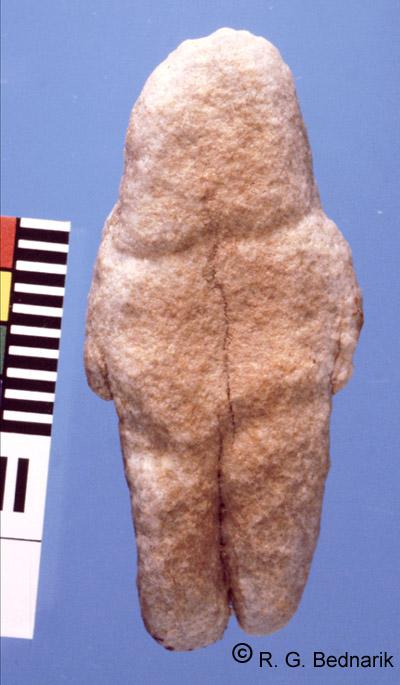The holy grail of archaeology is to discover the earliest evidence of symbolic thought in humans. Generally speaking, symbolism means that one thing represents or stands for another. In its most basic form, symbolic thought is iconic: an object in the world (e.g., rock) is related to an idea in the mind (e.g., person).
Because this relationship works in two directions, we are immediately confronted with a classic chicken-egg problem. I may see a rock that looks like a person and this may trigger thinking about a person. Or, I may be thinking about a person and see in a rock the figure of a person.
Which came first doesn’t really matter. What does matter is that this conceptual capacity is essential for language. Rock symbols provide a foundation of sorts for word symbols. But the difference between the two is significant.
Rock symbols resemble something in the world; this resemblance triggers the conceptual back and forth between object and idea. Word symbols do not resemble things in the world; there is no natural or causal relationship between word and object. The relationship is arbitrary.
With this brief lesson in semiotics, we can understand why archaeologists get so excited about really old rocks that have been altered or worked to look like people. There are two leading contenders for the oldest known rock symbols. The first is known as the Tan-Tan figurine from Morocco and is believed to be 400,000 years old:

There are eight grooves on this rock and Robert Bednarik (2003) asserts that five were incised by human hand. Bednarik’s microscopic examination also revealed traces of what he believes to be pigment or red ocher. I am not aware of anyone else who has studied the Tan-Tan, so cannot say whether Bednarik’s claim has been accepted. Because the Tan-Tan was dated on the basis of surrounding lithics (Middle Acheulian), there may be questions about its age.
The second contender is known as the Berekhat Ram figurine from Israel and is believed to be 230,000 years old:


If we assume for the sake of argument that both objects were in fact modified and curated by humans, I think it important to ask what they represent. The Tan-Tan has an anthropomorphic shape but not much else. The Berekhat Ram has an anthropomorphic shape and appears to be female.
Beyond this, not much can be said. They may have been ritual objects or nothing more than pleasing reminders. Their importance lies in the fact they may be symbols, not what those symbols may speculatively represent.
References:
Bednarik, R. (2003). A Figurine from the African Acheulian. Current Anthropology, 44 (3), 405-413 DOI: 10.1086/374900
d’Errico, Francesco, & Nowell, April (2000). A New Look at the Berekhat Ram Figurine: Implications for the Origins of Symbolism. Cambridge Archaeological Journal, 10, 123-167 : 10.1017/S0959774300000056



